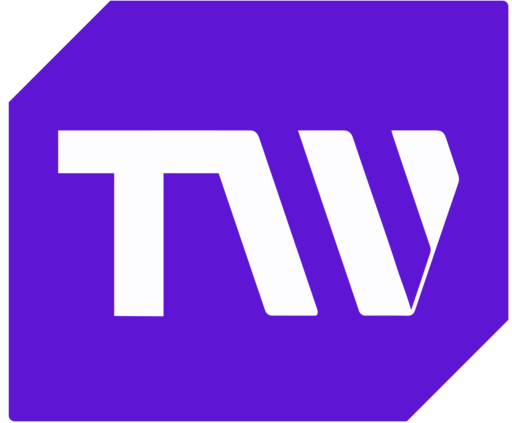Mailchimp: Navigating Email Marketing in the SaaS World
In 2001, Ben Chestnut and Dan Kurzius started a web agency called the Rocket Science Group. Business went well, but they soon observed that their clients struggled with managing their email marketing efforts because they only had access to expensive and difficult-to-navigate tools. Recognizing the market gap for an affordable and easy-to-use email marketing tool, Ben and Dan focused their business on what is now Mailchimp today.
Mailchimp started as a way for businesses to design custom email templates and manage their mailing lists. Now, it has evolved to provide more valuable digital marketing solutions, such as website creation, social media scheduling, shoppable landing pages, and digital advertising.
But how did this success-inducing evolution occur, and what does Mailchimp have to offer businesses today?
Let’s dive in and find out!
Mailchimp’s Evolution in 2024: What’s New?
1. Intuit Assist

Source: Mailchimp
Intuit Assist is an AI-powered growth assistant designed to help businesses grow and retain customers by emphasizing personalization as a customer engagement tactic. With Intuit Assist, businesses can generate personalized emails and automated services for various tasks with minimal effort. This includes tasks like welcoming new customers, promoting new products, and recovering abandoned carts.
2. Multilingual Support
The Mailchimp app is now available in multiple languages, including French, Spanish, Italian, Portuguese, and German, making the platform more accessible to a global user base.
3. Unified Omni-channel Reporting

Source: Mailchimp
A single Mailchimp dashboard now houses audience analysis, revenue tracking, insights, and email and SMS credit usage. This update means that:
- From a single point of access, businesses can now have an extensive overview of their marketing efforts across multiple channels.
- Marketing teams can focus on business growth strategies without going through the complexities of switching between different tabs or tools to analyze various aspects of their marketing campaigns.
4. SMS in Customer Journey Builder

Source: Mailchimp
This feature improves businesses’ customer engagement by helping you create personalized text messages and emails for specific customer journeys, such as a thank you SMS after a customer makes a purchase, or a special offer text after a customer abandons their cart.
The best part? The feature is automated, so businesses can maintain customer engagement without constant manual input.
Mastering Email Marketing with Mailchimp
Nothing beats the power of effective communication for a business that aims to build, maintain, and convert strong relationships with its customers—and email marketing is one effective way to achieve this.
Now, email marketing isn’t just about sending newsletters; with the right approach, it’s a master strategy that can significantly improve your customer engagement, lead conversion, and customer retention rates. With a platform like Mailchimp, this is pretty straightforward.
Here’s a closer look at what Mailchimp does:
1. Email marketing and campaigns
Mailchimp’s core functionality revolves around email marketing. It allows users to seamlessly create, send, and track email campaigns. For users with no design skills, Mailchimp provides pre-designed and customizable templates with a simple drag-and-drop editor, making it easy for them to create beautiful and professional-looking emails.
2. Automation
Marketing automation is one of Mailchimp’s strong points. It’s like a smart assistant that helps businesses streamline their customer engagement efforts with minimal input. With Mailchimp, businesses can set up automated emails triggered by specific customer actions.
For instance, you could send an automatic welcome email when someone signs up for your newsletter, a special offer when they visit a particular page on your website, or a thank-you note and suggestions for other things they might like when someone makes a purchase on your website.
3. Analytics and Reporting
Mailchimp’s analytics give businesses insight into the impact of their marketing efforts. You can view important metrics like open rates, click-through rates, bounce rates, conversion rates, and subscriber growth, allowing you to make data-driven decisions to improve customer engagement strategies.
4. Audience Management
Mailchimp has various tools and features to help businesses grow and manage their audience. For instance:
- List building and maintenance
With Mailchimp’s customizable signup forms, you can gather subscribers and collect essential information like names, email addresses, ages, and interests. You also have options to expand your reach: you can share your signup form on social media, link to it within emails, or embed it on your website.
Also, Mailchimp can automatically remove inactive emails, thereby keeping your list clean and ensuring that only people who are genuinely interested in your emails get them.
- Customer Segmentation
With Mailchimp’s email personalization features, you can tailor your emails to different, specific audiences, ensuring that your customers receive personalized content that’s engaging, relevant, and specific to their needs and interests—ultimately increasing your engagement rate,
- Behavioral email targeting
Mailchimp offers behavioral email targeting by leveraging your subscribers’ actions to send them personalized content. For example, Mailchimp tracks if your subscribers click a particular link, open a specific email, or make a purchase, and based on these actions, it can automatically group them, so you can create and send them personalized content that matches their preferences.
5. Integration with E-commerce platforms
Mailchimp’s E-commerce integration enables individuals and businesses to seamlessly connect their online stores to Mailchimp, with access to features designed to boost online sales, like marketing automation, online advertising, revenue reporting, abandoned cart emails, and product retargeting. This makes it easy to synchronize customer information like purchase history and create more focused campaigns.
6. Integration with social media platforms
Mailchimp also integrates with social media platforms like Instagram, Twitter, and Facebook. This allows you to connect your Mailchimp account to your social media accounts and share campaigns directly. You can also schedule content for your social media accounts on Mailchimp. With this integration, you can expand your reach, increase engagement, and grow your audience across multiple channels.
7. Integration with analytical tools
You can integrate analytical tools like Google Analytics into your Mailchimp account. This integration will give you deeper insight into the impact of your email campaigns, help monitor your website’s traffic, track subscriber behavior, measure your lead conversions, and track your ROI.
Mailchimp’s Pricing and Plans: A Comprehensive Overview
Whether it’s an individual looking to establish an online presence, a small business just starting out in the email marketing space, or a large enterprise looking for advanced marketing solutions, Mailchimp has a wide range of plans to accommodate the needs and preferences of different users.
Mailchimp’s pricing plans are divided into three segments:
- Email Marketing: suitable for businesses of all sizes aiming to engage their audience through email campaigns.
- Websites: suited for individuals and businesses looking to establish or expand their online presence.
- Transactional Emails: best for developers and businesses who need personalized and automated emails in response to their subscribers’ actions.
Here’s a breakdown of Mailchimp’s pricing plans:

Source: Mailchimp
Email Marketing
Mailchimp’s Free Plan can allow up to 500 subscribers and 1,000 emails per month, but for other plans, prices increase based on the number of your subscribers. Plus, for the first 12 months, Mailchimp offers a 50% discount for the Essentials, Standard, and Premium plans.
| PLANS | FREE | ESSENTIALS | STANDARD | PREMIUM |
| Suitable for | Newbies who want to grow an audience. | Frequent email senders in need of extra sending capacity and access to support. | Marketers looking to fast-track their business growth. | Ind./businesses with a large audience and in need of exclusive support options |
| Monthly price | $0 | $6.50 | $10 | $175 |
| Max number of subscribers | 500 | Varies | Varies | Varies |
| Max emails per month | 1,000 | 5,000 | 6,000 | 150,000 |
| AI features | – | – | Yes | Yes |
| Campaign Manager | – | – | Yes | Yes |
| Automated customer journeys | – | 4 | 200 | 200 |
| Audience segments | 1 | 3 | 5 | Unlimited |
| Customer support | Email support for first 30 days | 24/7 email & chat Support | 24/7 email & chat Support | Exclusive and priority support |
| Email scheduling | – | Yes | Yes | Yes |
| Signup forms | Yes | Yes | Yes | Yes |
| Landing pages | Yes | Yes | Yes | Yes |
| Pre-designed email templates | Limited | Unlimited | Unlimited | Unlimited |
| Advanced & predictive segmentation | – | – | Yes | Yes |
| Behavioral targeting | – | – | Yes | Yes |
| Custom-coded templates | – | – | Yes | Yes |
| Analytics and reporting | Limited | Limited | – | – |
| A/B Testing | – | Yes | Yes | Yes |
| Integration with other apps/tools | Yes | Yes | Yes | Yes |
Websites
Mailchimp’s Website Plan has a Free version and a Core version, which is priced at $10 per month.

Source: Mailchimp
Transactional Emails
Mailchimp charges a monthly fee for the Transactional Email Plan based on your estimated number of emails—starting from $20 monthly for 1-500,000 emails. It also charges $29.95 for an exclusive IP, depending on your needs,

Source: Mailchimp
MailChimp’s Success Strategies
Since its establishment in 2001, Mailchimp has grown from a tool to manage mailing lists to a globally recognized all-in-one email marketing platform serving millions of customers worldwide. Mailchimp has over 12 million active users every month. Also, in 2022, it reportedly generated more than $500 million in revenue.
This begs the question: how did Mailchimp get here? Let’s take a look at some of the company’s success strategies.
- MailChimp appeals to small businesses: With Mailchimp’s Free plan, small businesses can manage up to 500 subscribers and send up to 1000 emails every month with no charge. This approach works excellently because a sizable portion of the market comprises small enterprises, and it offers them a cost-effective way to start email marketing.
- Content Marketing: Mailchimp offers educational and informative content, including guides, tutorials, and marketing tips, on its blog and YouTube channel to help businesses and individuals improve their marketing knowledge and skills. This wealth of knowledge is invaluable for small businesses and individuals new to digital marketing.
- Focus on automation: Automation is one of Mailchimp’s biggest selling points. With features like triggered emails, automated workflows, and behavioral targeting, Mailchimp empowers businesses to engage with their audience at every stage of the customer journey while streamlining repetitive tasks effectively.
- Mailchimp’s branding is relatable: Mailchimp’s mascot, Freddie the Chimp, has a cool, down-to-earth personality that makes the brand feel relatable and fun. Also, unlike other tech-based companies’ sleek and sharp aesthetics, Mailchimp opts for a friendly and casual brand voice, showcasing it as an accessible resource for anyone.
The Verdict on Mailchimp in 2024
With its focus on helping small businesses succeed in the digital marketing space, Mailchimp undoubtedly stands out as one of the leading customer engagement tools in the world. Its ability to combine ease of use with powerful marketing capabilities makes it an invaluable tool for businesses looking to streamline their marketing efforts and achieve significant growth.
All in all, Mailchimp has proven to be not just an email marketing platform but a digital marketing solution. With its current trajectory, Mailchimp is set to play a crucial role in shaping the digital marketing strategies of businesses worldwide, marking its significance in the future of digital marketing.


